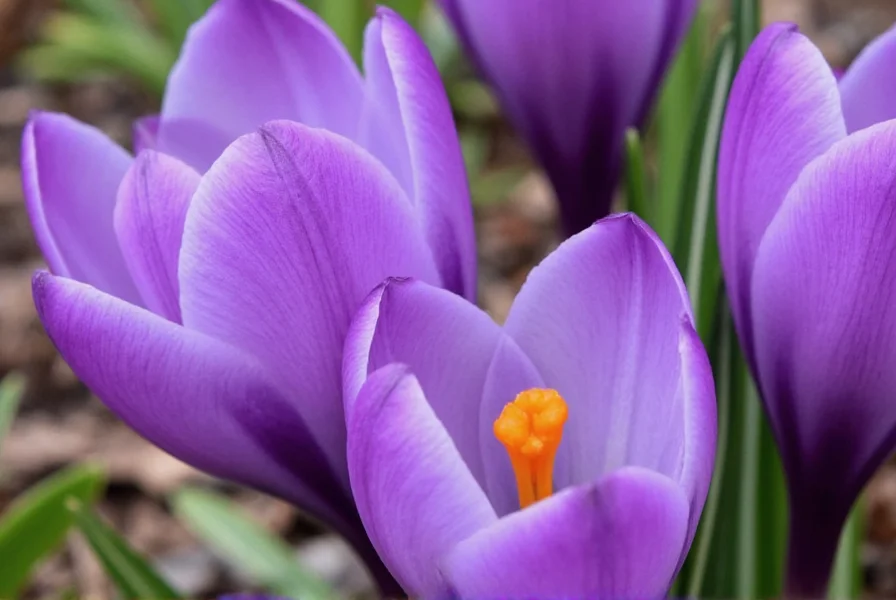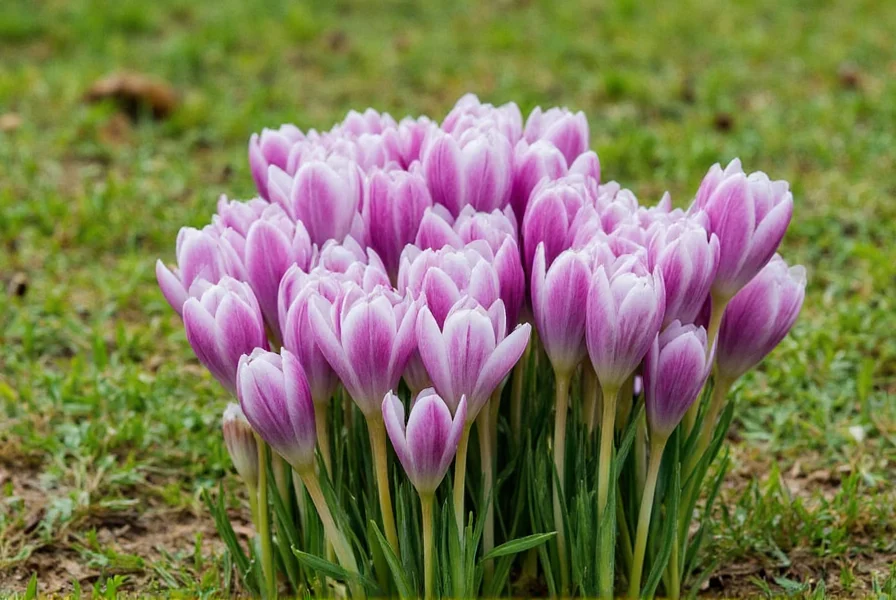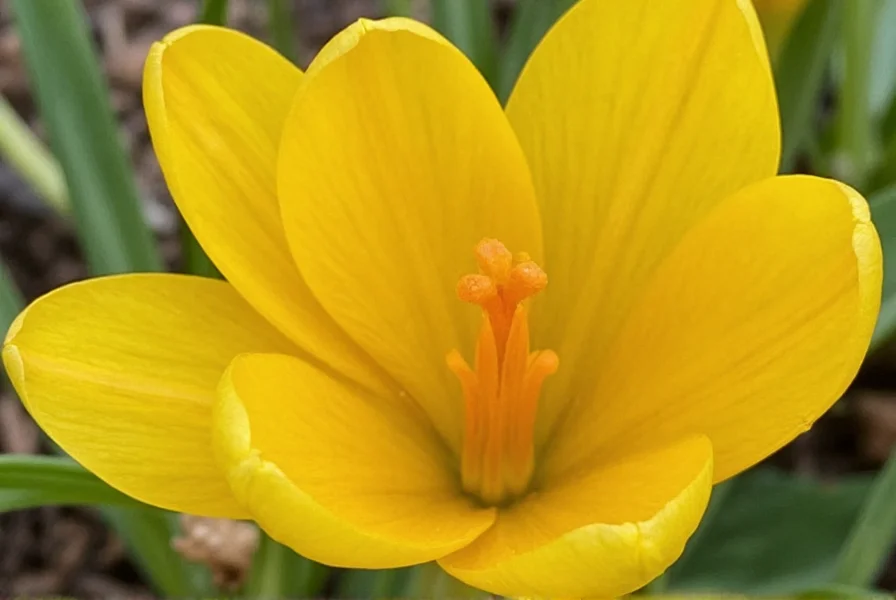Understanding crocus sativus saffron bulbs begins with recognizing their unique biological characteristics. Unlike common garden crocuses, Crocus sativus is a sterile triploid that reproduces exclusively through bulb division. This explains why commercial saffron production depends entirely on manual bulb propagation rather than seed cultivation.
Identifying Authentic Saffron Bulbs
Many gardeners mistakenly purchase Crocus speciosus or other ornamental crocus varieties when seeking saffron bulbs. True Crocus sativus bulbs have distinct features:
| Characteristic | Authentic Saffron Bulbs | Common Imposters |
|---|---|---|
| Size | 2-3 cm diameter | Often smaller (1-2 cm) |
| Color | Brown outer tunic | Often darker brown or black |
| Roots | Thick, fleshy roots | Thinner, fibrous roots |
| Flower Timing | Late September to October | Spring blooming |

Optimal Planting Conditions for Saffron Crocus
Successful saffron cultivation depends on precise environmental conditions. The best time to plant saffron crocus bulbs varies by climate zone but generally occurs in late summer (July-August in Northern Hemisphere) to allow root development before flowering.
Key planting requirements include:
- Soil composition: Sandy loam with excellent drainage (pH 6-8)
- Planting depth: 15-20 cm below surface (deeper in sandy soils)
- Spacing: 10-15 cm between bulbs
- Sun exposure: Minimum 6 hours of direct sunlight daily
- Temperature range: Thrives in regions with hot, dry summers and mild winters
Crocus Sativus Care Instructions Through Growing Season
Proper care of crocus sativus growing requirements ensures maximum saffron yield. The plant's growth cycle follows distinct phases:
- Summer dormancy (June-August): Bulbs remain underground; avoid watering
- Root development (August-September): Initial watering stimulates root growth
- Flowering period (October): Critical phase requiring dry conditions during bloom
- Foliage growth (November-January): Active photosynthesis period
- Summer dormancy return (June): Natural cycle completion
Watering should follow the "dry summer, moist autumn" principle. Overwatering during summer dormancy causes bulb rot, while insufficient moisture during flowering reduces yield. Most growers apply water only after visible foliage appears.
Harvesting Saffron: Timing and Technique
Harvesting saffron from crocus sativus requires precision and speed. Flowers open at dawn and wilt by midday, making early morning the only viable harvest window. Each flower produces three crimson stigmas that must be hand-picked immediately after blooming.
The drying process significantly impacts saffron quality:
- Spread stigmas on fine mesh screens
- Dry at 40-50°C (104-122°F) for 10-12 hours
- Maintain air circulation without direct airflow
- Properly dried saffron should feel brittle but not powdery
It takes approximately 150 flowers to produce just 1 gram of dried saffron, explaining the spice's high value. Commercial growers typically achieve 10-15 kg of dried saffron per hectare annually.

Common Challenges in Saffron Cultivation
Gardeners attempting to grow saffron often encounter these issues:
- No flowering: Usually caused by improper planting depth or insufficient summer dormancy
- Bulb rot: Results from overwatering or poor drainage, particularly during summer
- Low yield: Often due to inadequate sunlight or premature foliage removal
- Pest damage: Rodents and birds may disturb bulbs; use protective mesh if needed
For long-term success, rotate planting locations every 3-4 years to prevent soil depletion and disease buildup. Properly stored bulbs maintain viability for 2-3 years when kept in cool, dry conditions with good air circulation.
Storing Saffron Bulbs Between Seasons
Understanding saffron bulb storage conditions ensures healthy regrowth. After foliage naturally dies back in late spring:
- Carefully dig up bulbs using a garden fork
- Remove excess soil and dead foliage
- Inspect for disease or damage
- Store in breathable containers with dry peat moss
- Maintain storage temperature between 15-20°C (59-68°F)
- Check monthly for mold or desiccation
Unlike many bulb plants, saffron crocus requires dry summer storage. Never refrigerate bulbs, as cold temperatures disrupt their natural dormancy cycle.
FAQs About Crocus Sativus Saffron Bulbs
How many saffron threads come from one crocus sativus bulb?
Each crocus sativus bulb typically produces 3-5 flowers during its blooming season, with each flower yielding three saffron threads (stigmas). A healthy, mature bulb may generate 10-15 threads annually, though production varies based on growing conditions and bulb age.
Can I grow saffron crocus in containers?
Yes, you can successfully grow crocus sativus in containers with proper drainage. Use pots at least 20 cm deep with sandy potting mix. Container-grown saffron requires more careful watering management but offers advantages in controlling soil conditions. Move containers to a dry, sheltered location during summer dormancy.
How long does it take for saffron bulbs to establish?
Crocus sativus bulbs typically require 2-3 years to reach full production capacity. In the first year, expect minimal flowering as the plant establishes its root system. Bulb multiplication occurs naturally through corm division, with yields increasing annually as the colony expands under proper care conditions.
Why aren't my saffron crocus bulbs flowering?
Common reasons for lack of flowering include improper planting depth (too shallow), insufficient summer dormancy period, overwatering during dormancy, or inadequate sunlight. Saffron crocus requires a hot, dry summer rest period to trigger flowering. Bulbs may also need 1-2 years to adjust to new growing conditions before producing flowers.
What's the difference between saffron bulbs and saffron seeds?
Crocus sativus is naturally sterile and does not produce viable seeds. All commercial saffron cultivation uses bulbs (corms), not seeds. Any seller offering "saffron seeds" is likely misrepresenting the product, as true saffron can only be grown from bulbs. The plant reproduces exclusively through bulb division.











 浙公网安备
33010002000092号
浙公网安备
33010002000092号 浙B2-20120091-4
浙B2-20120091-4